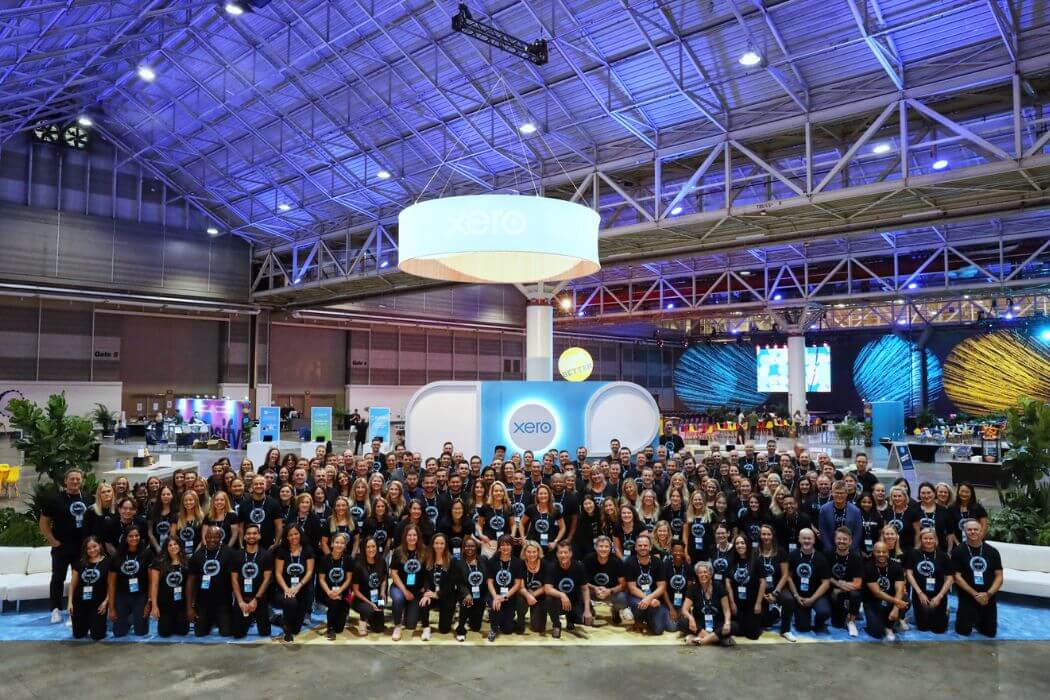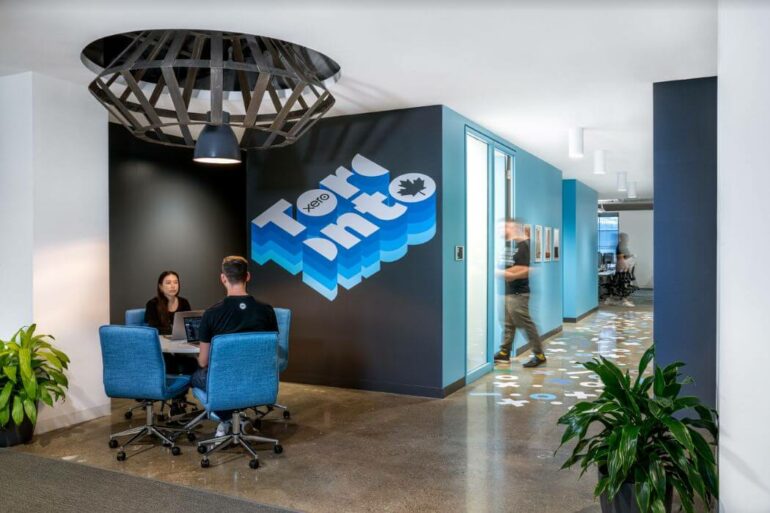Even with the power of the internet, making business decisions across continents is difficult. From cultural and communication norms to time zone challenges, it’s not as simple as drafting a directive and hitting send.
“We always value the team that has been built and recognize that the employees are crucial to the company’s success.”
This is something Patrick Smith, VP of Engineering for Xero, knows well. Smith joined the company after Xero’s acquisition of Toronto-based Hubdoc; now responsible for teams with global remits out of Toronto, he is passionate about keeping Xero’s culture across its five North American hubs consistent while respecting the unique nature of each team.
Speaking with BetaKit, Smith explained how Xero’s hubs all stay connected to one another, how employees align to global business decisions, and what it means to ‘be a Xero’ around the world.
All for One Xero
Whether it’s communications, culture, or transitioning new acquisitions, Smith said Xero focuses on a single goal: ensuring “One Xero.”
New ideas can come from anywhere and often sprout up from the local level, while company-wide directives necessarily come from senior leadership. But in the middle are all the processes, systems, and programs in place to ensure that employees are not just affected by culture or company decisions but get to play a role in building them out.
Many Xero functions have been asynchronous (“async”) for years, owing to the company’s global nature. However, the COVID-19 pandemic solidified async methods not only as a way to give employees the chance to focus on their work (rather than get distracted by meetings) but also to help them feel connected to the overall Xero mission and vision.
One example Smith shared was how the company is experimenting with async town halls. Xero product and technology leadership wanted to ensure that no one felt pressured to join live because there’s no single time that works for everyone. To accomplish this, the team tried a series of async and synced messaging for a town hall meeting: speakers submitted five-minute videos of them sharing their presentations, and people could respond via both Slack messages or synchronous drop-in sessions covering specific topics.
With this approach, “everybody’s on an even playing field and you’re not favouring one region over another,” Smith added.
Town hall meetings are great for broad company alignment but don’t generally deal with day-to-day concerns, so Xero also adopts other async communication methods to keep everyone connected. For instance, recorded meetings are commonplace for one-way communications, like announcements. Slack channels are leveraged for regional (e.g., Global, Canada, etc.) and functional (e.g., new product launches) updates. Google Suite is also the standard for collaborative work, with an emphasis on comments so there’s transparency on async feedback.
Promoting culture through process
Allowing for personal connections between Xeros around the world is crucial to company culture. Smith said Xero believes in a culture driven through mentorship, sharing experiences, and building growth opportunities. As VP of Engineering, Smith explicitly works to bring these cultural pillars to all of Xero’s North American hubs: Toronto, Calgary, Denver, and New York.
Smith told BetaKit that Xero built out multiple programs to ensure its culture could be supported through its business processes.
Cross-functional mentorship: The program matches people with others in the company they wouldn’t normally work with, both across hubs and role descriptions, giving everyone the chance to be a mentor, mentee, or both. Meetings are either 1:1 or in a small group, with the goal of knowledge sharing.
Smith said a cross-functional approach to mentorship benefits participants because they get exposure to different areas of the company, allowing them to see possible career paths and learn how they might attain them. From Xero’s perspective, Smith said this program has done wonders for retention.
“We are able to then support that and help retain our amazing Xeros by giving them opportunities for growth beyond, quite frankly, needing to leave,” he added.

Building a community of practice: Taking inspiration from the community of practice concept, this project will focus on gathering a small group of people with a shared passion, like helping define company standards, building best practices, or changing code bases. Right now the plan is to build communities within Xero’s North American offices, so everyone’s voices and perspectives can be represented.
Feedback up and down: Xero’s culture also requires taking feedback, which it does with weekly surveys. The main survey is a pulse check on each team, group, and region. There’s also an area for anonymous feedback in aggregate, giving people the opportunity to share their concerns or ideas. Leaders can then respond to all comments so there’s accountability. And finally, there are custom surveys diving into specific areas, which go out less frequently, often driven by the tone and comments in the weekly feedback surveys.
This initiative, Smith said, helps Xero focus on its employees’ well-being and “understand what we need to do to improve the lives of our Xeros.”
“We can measure how our team’s feeling about their wellness, how are they feeling in terms of their relationship with their manager, or their peers, or the feedback they’re getting or the growth that they’re getting,” said Smith.
Growth follows talent
Like many other employees, Smith joined Xero through acquisition. Xero has been steadily acquiring companies for much of its history as a company; in Canada alone, Xero acquired Hubdoc in Toronto, and more recently TaxCycle in Calgary.
Smith said a big part of acquisitions is “following talent,” which means both acquiring companies in existing tech hubs where they can grow and looking at companies with talented employees.
“It’s also about continuing to strengthen our product regionally and using incredibly smart, local experts who know their space intimately,” Smith said. “Xero is committed to realizing its opportunities here in North America, and Canada specifically is an important part of our growth plans.”
To further ensure that people who join Xero via acquisition feel connected to the company’s culture, there is a specific transitional onboarding process. Smith said these employees don’t go through onboarding as if they were totally new hires. Instead, it’s a mix of aligning everyone to Xero’s values and integrating processes over time.
“We always value the team that has been built and recognize that the employees are crucial to the company’s success,” Smith said. “We want to ensure working practices and rituals aren’t lost through the process. Everyone is welcomed to the larger team and introduced to their new cross-functional partners at Xero, and we learn from each other.”
Photo courtesy of Xero.


